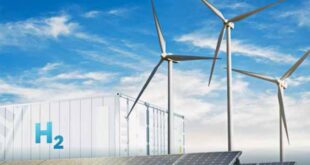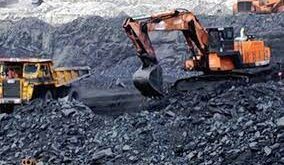In October 2018. the United Nations’ Intergovernmental Panel on Climate Change (IPCC) released a Special Report on Global Warming. The report reiterated the urgent need to limit rising global temperatures but admitted that “limiting global warming to 1.5°C would require rapid. far-reaching. and unprecedented changes in all aspects of society.“
Various agreements. such as the 1992 Kyoto Protocol. have had some success in curbing regional carbon dioxide emissions in developed countries. However. global emissions continued to rise. More recently. the 196 parties attending the 21st yearly Climate Change Conference (COP 21) negotiated the 2015 Paris Agreement to limit the global temperature rise to “well below 2 °Celsius“ compared to pre-industrial levels.
This week – three years later – the COP 24 convenes in Poland from December 3rd-14th. Attendees will tout measures aimed at reining in carbon dioxide emissions. but multiple agencies. such as the International Energy Agency’s (IEA). have warned that even if the pledges made as part of the 2015 Paris Accord are enacted into binding laws. it doesn’t go nearly far enough to meet the global temperature target.
The IPCC warns that the world has already warmed by about 1°C. negatively impacting the ecosystem. exacerbating rising sea levels. and contributing to increasingly destructive hurricanes. flooding. and wildfires.
Desperate Times
Most commercially successful efforts to date have focused on adopting lower-carbon energy sources and utilizing energy more efficiently. The dramatic increase in global wind and solar power are examples of success in displacing carbon-based energy sources.
That said. much of the world continues to burn fossil fuels. Developing areas like the Asia Pacific region still rely heavily on coal for power production. This is a key reason emissions in these areas continue to grow rapidly. and now account for 2 3rds of the world’s carbon dioxide emissions.
Tensions between the conflicting priorities of emissions reductions and baseload energy needs have played out in debates over international funding for fossil fuel projects. World Bank president Jim Yong Kim admitted last month that he had received push-back from African leaders who accuse the Bank of “telling us we can’t develop and have baseload energy because we can’t use a single drop of fossil fuel for our own energy needs.“
That standoff has refocused attention on methods for removing carbon from the atmosphere. Approaches that can remove carbon dioxide from the air and sequester it away (as trees do) remain mostly at an experimental stage. The biggest challenge in such approaches is that even though 400 ppm of carbon dioxide in the atmosphere poses a risk to the climate. it’s not sufficiently concentrated to make capturing it from the air economically appealing in most cases.
To remove just 400 tons of carbon dioxide from the atmosphere would require one million tons of air to be processed. This would generally entail moving the air. which requires energy and may entail more emissions.
Carbon Capture. Utilization. and Storage
Another approach is beginning to gain momentum. Y Combinator. a startup accelerator that has spawned several successful companies. has shifted its focus to solutions like carbon capture. utilization. and storage (CCUS). These approaches typically involve methods of capturing carbon dioxide from the flue gas of power plants. and either storing it or recycling it into products like fuels. chemicals. or plastics.
Of all the global sources of carbon dioxide emissions. power plants are the most attractive for CCUS. Unlike automobiles. which globally represent something like a billion individual sources of carbon dioxide. power plants represent large. concentrated sources of carbon dioxide emissions.
Cost-effective methods for scrubbing these emissions and preventing them from entering the atmosphere could substantially slow the rise of atmospheric carbon dioxide. The challenges in CCUS are to find approaches that are economically viable. and that manage to store or otherwise reuse the carbon dioxide in a way that reduces the overall carbon dioxide footprint.
The best technical approach for sequestering the carbon dioxide for extended periods would be to simply capture it and inject it into underground caverns. But this approach requires additional power inputs to compress and transport the carbon dioxide and isn’t necessarily economically viable. While technically possible. it could add significantly to the cost of the power produced since the carbon dioxide isn’t being economically utilized.
But economical approaches also need to sequester carbon dioxide. Two major uses of carbon dioxide are for carbonation in soft drinks. and for use in enhanced oil recovery. These are profitable uses of carbon dioxide. but neither of these outlets would lead to anything more than transient storage.
Recycling Carbon Dioxide
Now consider an approach that converts carbon dioxide into a fuel. The fuel would eventually release carbon dioxide to the air. but the overall carbon footprint is lowered because the fuel can potentially replace a petroleum-based fuel. I recently reported on a visit to a company in Iceland — Carbon Recycling International — that utilizes this approach. The company takes carbon dioxide emissions from geothermal power plants and converts that into methanol that is sold into the fuel market.
A better approach would be to recycle the carbon dioxide into a plastic or building material that could be sequestered for a longer period. Some companies are utilizing carbon dioxide in the production of cement. which could bind the carbon for decades. This is the approach taken by UCLA Professor Gaurav Sant. who helped pioneer a 3-D printed building material made from captured carbon dioxide from smokestacks called “CO2NCRETE.“
Alternatively. carbon dioxide can be used in greenhouses to make plants grow faster. and if those plants (e.g.. wood. bamboo. straw. etc.) are using in construction materials. the carbon can be bound for an extended period.
Conclusions
Rising carbon dioxide emissions represent a problem so pressing. the IPCC has concluded that the world must immediately mobilize to avoid catastrophic climate impacts if the global climate warms by more than 1.5 degrees Celsius. A multi-pronged approach is needed. and there is no time to waste. CCUS represents an important. but underutilized tool that warrants more attention.
 Iran Energy News Oil, Gas, Petrochemical and Energy Field Specialized Channel
Iran Energy News Oil, Gas, Petrochemical and Energy Field Specialized Channel




